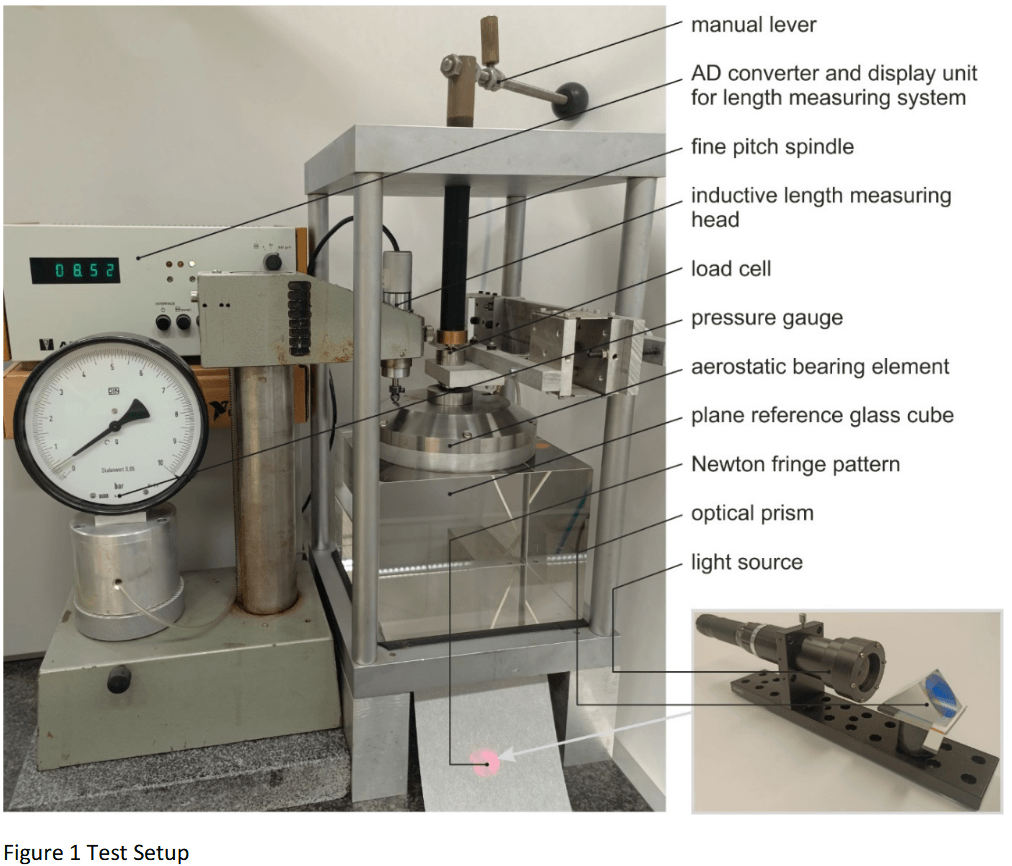Detailed information
Interferometric air gap measurement on aerostatic air bearing elements
Univ-Prof. Dr.-Ing. René Theska, Head of the Precision Engineering Group //
Institute of Design and Precision Engineering/ Department of Mechanical Engineering/ TU Ilmenau
Air bearing elements are widely used in the ultra-precise guidance of devices and machines. They are characterized by the following
properties, among others:
- lowest friction
- no stick-slip effect
- no wear
- highest running smoothness
- high load capacity
- high rigidity.
The characteristic curve load capacity over air gap height shows a non-linear character. The slope of the tangent at the operating
point is a measure of the stiffness. Optimum load-bearing properties are achieved with very small air gap heights of approx. 7-8
micrometers. The prerequisites for operation under these conditions are very low flatness deviations of the air bearing and guide
surfaces of less than 1 micrometer. A trouble-free in situ measurement of the real air gap height is not possible with conventional
length measuring systems. For this purpose, a testing device is used in which the interference between the air bearing surface and a
flat reference surface is evaluated. This allows shape deviations as well as load-dependent changes in the gap height to be
determined directly with submicrometric resolution.
With suitable illumination, interference patterns visible to the naked eye appear when the flatness deviation is small and the two
surfaces are only a few micrometers apart. These are usually stripes or rings called Newton rings. Along the lines of equal intensity,
the distances between the two optical surfaces are equal. They are called interference lines of equal thickness. These interference
lines of equal thickness thus plot height profile lines of a height map of the air bearing surface against the reference surface. The
height difference from one interference ring to the next is half a wavelength from the 2-beam interference condition. The
interference rings or fringes are counted and give the deviation in shape or gap height.
In order to determine the stiffness, air bearing elements are used in the test rig in such a way that the air bearing surface can align
itself to the reference surface of a very stiff glass cube. If the bearing element is sufficiently supplied with air, the air gap is formed.
The acting load can be sensitively and continuously adjusted via a spindle drive and measured via a load cell. The number of
interference fringes passing through during the load variation reflects the corresponding change in gap height.



